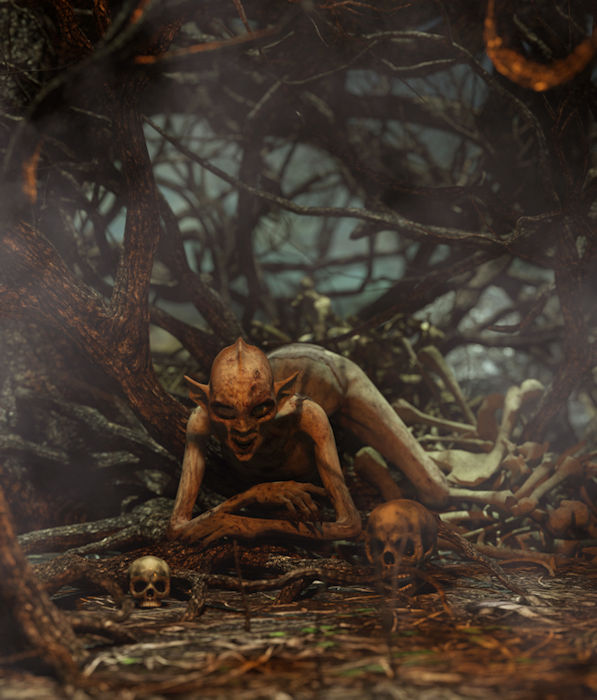Empusa – Shape-Shifting Evil Female Demon In Greek Myth And Folklore
A. Sutherland - AncientPages.com - The empusa initially appears in the mythology of classical Greece as a frightening female monster. She is a demonic vampire without a shape of its own, but with the ability to appear in many different animal guises and as a beautiful, tempting young woman.
Credit: Adobe Stock - Joeprachatree
Modern-day Greek folklore still speaks of the empusa, who enters the body of its human prey (particularly children) to consume the flesh and blood of its victim. She loves to eat young and beautiful bodies and drink their blood because it’s strong and pure.
Empusa represents the Grecian form of a vampire. In the Greek myth, this female demon is usually described as having one prosthetic leg made of brass and the other leg of a donkey; from the waist up, Empusa is a human-like creature with hideous blemishes and scars on her skin.
She was said to have been the daughter of the goddess of witchcraft, the night, moon, ghosts, and necromancy, Hekate, and was sent by her to torment people, especially travelers.
This evil creature seeks its prey, and as the shape-shifter changes its apparition into an animal or a beautiful woman. She drinks her victims’ blood and consumes their flesh (like a vampire or succubus). The monster thrives in waters and on land, so it usually dwells along the coast.
An ancient story about a 25-year-old man of Lycia, Menippus, who is intelligent, handsome, and exceptionally well-built as an athlete, relates an encounter with this evil creature. One day, as Menippus walks along the road, he is met by an apparition. Empusa appears in the guise of a Phoenician woman, and Menippus lives under her spell. He falls in love with her and plans to marry her, unaware of what she is.
Apollonius is somewhat skeptical of her; he attends the wedding and is introduced to her by Menippus of Corinth, his former student. This wealthy woman is the mistress of all the servants. Hearing this, Apollonius tells Menippus that his wonderful bride is nothing but a vampire who – like others in her race - loves to devour flesh and blood of its victims.
Apollonius of Tyana made the young woman confess her true identity, thereby rescuing Menippus from a terrible fate on his wedding night.
Menippus’ bride is offended and orders Apollonius to leave, but his words have already broken her spell, and all the gold, silver, and servants vanished.
Pretending to weep, this demonic creature begs Apollonius not to force her to confess what she is, but he does. Finally, she admits she usually chooses her offers among young and beautiful people to dine on them, and Menippus is one of them.
Belief in this evil monster persists into modern times. Present-day shepherds blame her for accidents that happen to their animals, claiming that she suddenly appears, hurts them, and disappears again. Later tales describe a whole race of these monsters - the Empusae - living on the North African coast in Libya.
The ’Empusa’ is the early Greek term for the later Latin term ‘lamia.’ Over the ages, the descriptions of this female demon changed considerably and were often confused with Lamia
Ancient people believed that the only defense against these monsters was abusing them verbally or shouting insults. As a result, they screamed and fled their way.
Except for the Greek account of Empusa, the same awful creature is known in other ancient cultures of the Mediterranean region.
Written by – A. Sutherland AncientPages.com Staff Writer
Copyright © AncientPages.com All rights reserved. This material may not be published, broadcast, rewritten or redistributed in whole or part without the express written permission of AncientPages.com
Expand for referencesReferences:
Grant M, Hazel J. Who's Who in Classical Mythology
March J. R. Dictionary of Classical Mythology
More From Ancient Pages
-
 America’s Oldest City Caral Illegally Invaded And Archaeologist Threatened With Death
Archaeology | Jan 21, 2021
America’s Oldest City Caral Illegally Invaded And Archaeologist Threatened With Death
Archaeology | Jan 21, 2021 -
 New Clues To Behavior Of Neanderthal Hunting Parties
Archaeology | Mar 27, 2023
New Clues To Behavior Of Neanderthal Hunting Parties
Archaeology | Mar 27, 2023 -
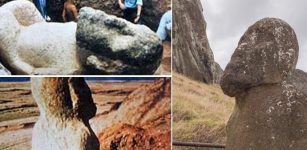 Unusual Tukuturi Statue On Easter Island Remains An Unexplained Mystery
Civilizations | Jan 16, 2019
Unusual Tukuturi Statue On Easter Island Remains An Unexplained Mystery
Civilizations | Jan 16, 2019 -
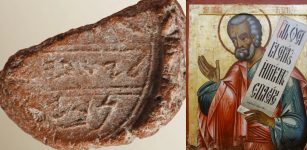 Ancient Seal Offers First Biblical Evidence Of The Prophet Isaiah?
Archaeology | Feb 27, 2018
Ancient Seal Offers First Biblical Evidence Of The Prophet Isaiah?
Archaeology | Feb 27, 2018 -
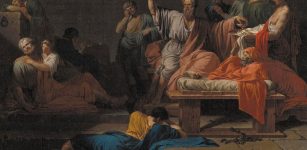 Socrates: Great Philosopher And Brave Man Who Still Inspires Many People
Featured Stories | Jul 21, 2016
Socrates: Great Philosopher And Brave Man Who Still Inspires Many People
Featured Stories | Jul 21, 2016 -
 Why Did Ancient Romans Build So Many Straight Roads?
Ancient History Facts | Aug 9, 2017
Why Did Ancient Romans Build So Many Straight Roads?
Ancient History Facts | Aug 9, 2017 -
 DNA Of 10,000-Year-Old Skeletal Remains And Kinship Of Earliest World Settlers
Archaeology | Apr 21, 2021
DNA Of 10,000-Year-Old Skeletal Remains And Kinship Of Earliest World Settlers
Archaeology | Apr 21, 2021 -
 500-Year-Old Shiva Temple Constructed On Rock Without Foundation Pits Needs Repairs
News | Sep 7, 2015
500-Year-Old Shiva Temple Constructed On Rock Without Foundation Pits Needs Repairs
News | Sep 7, 2015 -
 Large 4,000-Year-Old Sumerian Port Discovered In The Desert In Iraq
Archaeology | Apr 4, 2018
Large 4,000-Year-Old Sumerian Port Discovered In The Desert In Iraq
Archaeology | Apr 4, 2018 -
 New York’s Queen Of Thieves Fredericka Mandelbaum Opened Marm’s Grand Street School For Criminals
Featured Stories | Oct 22, 2019
New York’s Queen Of Thieves Fredericka Mandelbaum Opened Marm’s Grand Street School For Criminals
Featured Stories | Oct 22, 2019 -
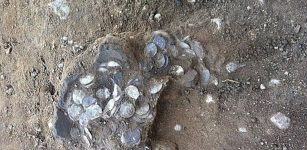 Viking Age silver coins unearthed in Jutland
Artifacts | Aug 27, 2015
Viking Age silver coins unearthed in Jutland
Artifacts | Aug 27, 2015 -
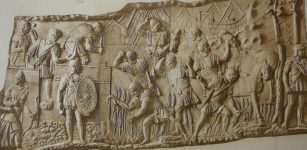 Secret Police In Ancient Rome – Frumentarii: Who Were They And What Was Their Role?
Featured Stories | Aug 12, 2019
Secret Police In Ancient Rome – Frumentarii: Who Were They And What Was Their Role?
Featured Stories | Aug 12, 2019 -
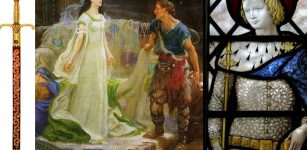 Curtana – Sword Of Mercy Once Belonged To The Anglo-Saxon King Edward The Confessor And Perhaps Even The Arthurian Hero Tristan
Artifacts | Jul 16, 2017
Curtana – Sword Of Mercy Once Belonged To The Anglo-Saxon King Edward The Confessor And Perhaps Even The Arthurian Hero Tristan
Artifacts | Jul 16, 2017 -
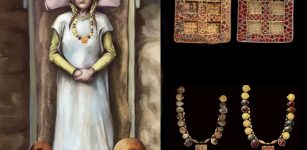 Mystery Of The Anglo-Saxon Harpole Burial Continues – New Clues
Archaeology | Dec 14, 2023
Mystery Of The Anglo-Saxon Harpole Burial Continues – New Clues
Archaeology | Dec 14, 2023 -
 Mead: Secret Drink Of The Vikings And Gods – Was It An Ancient Antibiotic?
News | Feb 21, 2016
Mead: Secret Drink Of The Vikings And Gods – Was It An Ancient Antibiotic?
News | Feb 21, 2016 -
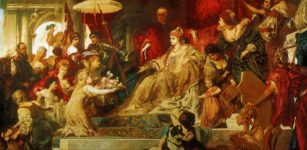 Tragic Reign Of Caterina Cornaro – The Last Queen Of Cyprus And Patron Of The Arts
Featured Stories | Jul 4, 2019
Tragic Reign Of Caterina Cornaro – The Last Queen Of Cyprus And Patron Of The Arts
Featured Stories | Jul 4, 2019 -
 Amazing Prehistoric Forest Submerged Under Water Thousands Of Years Ago Re-Emerges On Welsh Beach
Archaeology | Nov 11, 2022
Amazing Prehistoric Forest Submerged Under Water Thousands Of Years Ago Re-Emerges On Welsh Beach
Archaeology | Nov 11, 2022 -
 On This Day In History: Courageous And Heroic Radio Rescue At Sea – On Jan 23, 1909
News | Jan 23, 2017
On This Day In History: Courageous And Heroic Radio Rescue At Sea – On Jan 23, 1909
News | Jan 23, 2017 -
 How Ramesses II Became The Greatest Pharaoh In Egypt
Featured Stories | Jun 6, 2021
How Ramesses II Became The Greatest Pharaoh In Egypt
Featured Stories | Jun 6, 2021 -
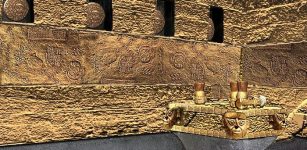 Coricancha – Stunning Golden Garden And Lost Treasures Of The Inca
Featured Stories | Aug 20, 2021
Coricancha – Stunning Golden Garden And Lost Treasures Of The Inca
Featured Stories | Aug 20, 2021

